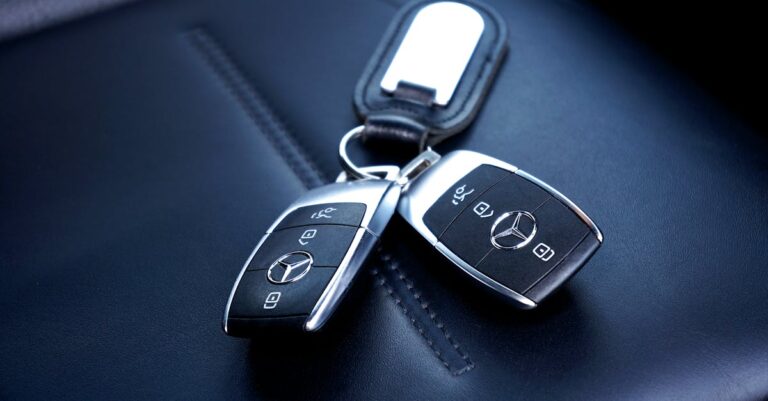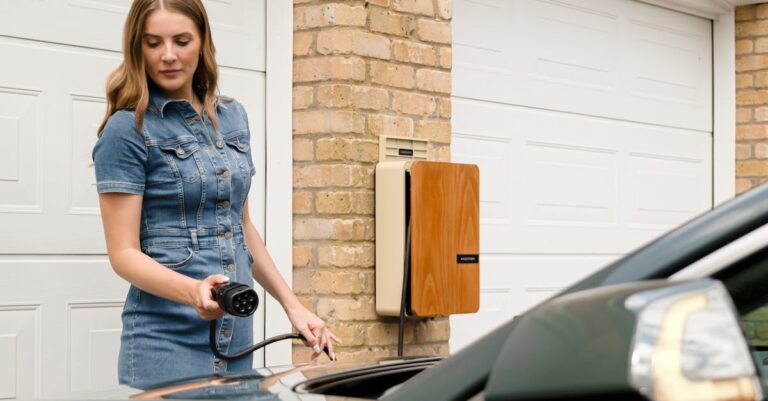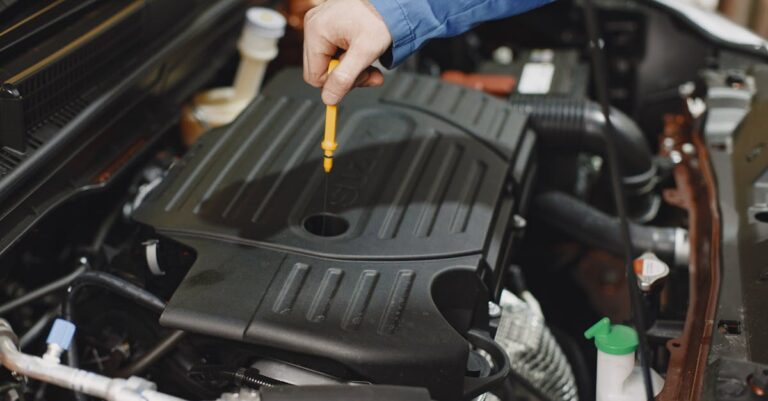Safe Driving Tips For New Drivers: Your Road Map to Confidence
Getting your driver’s license is a huge milestone, right? It’s like unlocking a new level in the game of life, offering freedom and independence you’ve probably craved for years. Suddenly, the world feels a bit bigger, and the possibilities seem endless. But let’s be real, along with that excitement often comes a healthy dose of nerves. Taking control of a couple of tons of metal moving at high speeds is a big responsibility, and it’s totally normal to feel a little overwhelmed.
That’s where we come in. Think of this guide as your friendly co pilot, here to share some essential safe driving tips specifically tailored for you, the new driver. We’re not here to scare you, but to empower you with the knowledge and habits that will build your confidence and keep you safe on the road. Ready to buckle up and dive in?
Why Safe Driving Matters (Especially When You’re New)
Okay, let’s get the serious stuff out of the way first, but stick with me, it’s important. Why is focusing on safety extra crucial when you’re just starting out?
Understanding Increased Risk
Statistics don’t lie, unfortunately. New drivers, particularly teenagers, face a significantly higher risk of being involved in accidents compared to more experienced drivers. It’s not because you’re intentionally reckless; it’s simply a matter of inexperience. You’re still learning to anticipate hazards, judge speeds and distances accurately, and react quickly and appropriately in unexpected situations. Your brain is literally building new pathways to handle the complex task of driving. Recognizing this increased risk isn’t meant to frighten you off the road, but to highlight why adopting safe practices from the very beginning is non negotiable.
Building Good Habits from Day One
Think about learning anything new – playing guitar, learning a language, mastering a sport. The habits you form early on tend to stick, right? Driving is exactly the same. If you start by cutting corners (sometimes literally!), being easily distracted, or taking unnecessary risks, those behaviors can become ingrained and much harder to break later. Conversely, if you prioritize safety, focus, and defensive techniques from your first solo drive, you’re building a strong foundation for a lifetime of safe driving. It’s about making safety your default setting, not an afterthought.
Mastering the Basics: Beyond Passing the Test
You passed the driving test – congratulations! That proves you understand the fundamental rules and can control the vehicle under supervision. But real world driving often throws curveballs the test doesn’t cover. True mastery comes from getting intimately familiar with your car and honing those basic control skills until they feel like second nature.
Know Your Vehicle Inside and Out
Your car isn’t just a machine; it’s your partner on the road. Get to know it! Before you even start the engine regularly, spend time just sitting in the driver’s seat. Where are the controls for the headlights, windshield wipers (front and back!), hazard lights, defroster? How do you adjust the steering wheel and seat for optimal comfort and control? Knowing these things instinctively means you won’t be fumbling for a control when you should be focusing on the road.
Mirror Adjustments: Seeing the Whole Picture
Your mirrors are your eyes in the back and sides of your head, but only if they’re set correctly! Don’t just glance and assume they’re fine. For your side mirrors, lean your head towards the driver’s side window until it almost touches, then adjust the mirror so you can just barely see the side of your car. Repeat on the passenger side, leaning towards the center console. Your rearview mirror should frame the entire rear window. The goal is to minimize blind spots – those sneaky areas around your car where another vehicle can hide. Make checking your mirrors a frequent, almost subconscious habit, especially before changing lanes, turning, or slowing down.
Seat and Steering Wheel Positioning
This might seem trivial, but proper positioning is key for both comfort and safety. Adjust your seat so you can comfortably reach the pedals without fully extending your leg (you need leverage!). You should be able to sit upright, not slumped, with your back supported. Adjust the steering wheel (if possible) so it’s pointed towards your chest, not your face, and you can comfortably hold it with your arms slightly bent. A good rule of thumb is the “wrist test”: rest your wrist on top of the steering wheel; if your shoulder blade is still touching the seat back, you’re likely at a good distance. Proper positioning ensures better control and reduces fatigue on longer drives.
Smooth Acceleration and Braking
Driving isn’t a drag race or a braking competition. Smoothness is key! Jerky starts and sudden stops are not only uncomfortable for passengers but can also be unsafe. Practice applying gentle, steady pressure to the accelerator to get up to speed smoothly. Anticipate stops well in advance – watch traffic lights, look for brake lights ahead – and apply the brakes gradually and evenly. Imagine you have a full cup of coffee on the dashboard that you don’t want to spill. This smooth control makes driving more predictable for others around you and gives you more time to react if something unexpected happens.
Minimizing Distractions: The Biggest Roadblock
In today’s world, distractions are everywhere, and behind the wheel, they can be deadly. Driving requires your full attention – visual, manual, and cognitive. Taking any part of that attention away, even for a split second, dramatically increases your risk of a crash.
The Phone Problem: Put It Away!
Let’s just call it what it is: smartphones are arguably the single biggest distraction for drivers of all ages, but especially tempting for new ones. Texting, scrolling social media, changing playlists, even just glancing at notifications – it all takes your eyes and mind off the road. Using a handheld phone while driving is illegal in many places for a reason. But even hands free devices aren’t truly risk free, because the cognitive distraction (your mind being focused on the conversation, not the driving task) is still significant. The absolute safest approach? Put your phone on silent, out of sight and out of reach (like in the glove compartment or your bag in the back seat) *before* you start driving. Set your navigation and playlist before you leave. If something is truly urgent, pull over safely to the side of the road to deal with it.
Passengers, Music, and More
Phones aren’t the only culprits. Having multiple friends in the car, especially early in your driving career, can be highly distracting. Loud conversations, joking around, or pressure from passengers can easily pull your focus. Many graduated licensing programs have restrictions on the number of passengers a new driver can have for this very reason. Be firm with your friends about needing to concentrate. Similarly, fiddling with the radio or climate controls, eating or drinking, reaching for something you dropped – these all constitute distractions. Try to minimize these activities while the car is in motion. Set your environment (music volume, temperature) before you put the car in drive.
Defensive Driving: Expecting the Unexpected
Defensive driving isn’t about being paranoid; it’s about being prepared. It means actively looking for potential hazards and anticipating the actions (or mistakes) of other drivers, cyclists, and pedestrians. It’s about putting yourself in the best position to avoid trouble before it even starts.
The Two Second Rule (and Beyond)
One of the cornerstones of defensive driving is maintaining a safe following distance. The “Two Second Rule” is a simple way to gauge this. Pick a fixed object ahead (like a signpost or an overpass) that the car in front of you passes. Start counting “one one thousand, two one thousand.” If you reach that object before you finish counting to two, you’re following too closely. This gives you time to react and brake safely if the car ahead stops suddenly. Important note: This is a minimum! You need to increase this distance in less than ideal conditions:
- Bad weather (rain, snow, fog): Double it to four seconds or more.
- Night driving: Add at least another second.
- Following large vehicles (trucks, buses): They block your view, so stay further back.
- Heavy traffic or high speeds: More space equals more reaction time.
Being tailgated? Don’t speed up. Maintain your speed or, if safe, gradually slow down a little to encourage the driver behind you to pass, or change lanes yourself when possible.
Scanning the Road Ahead
Don’t just stare at the bumper of the car in front of you. Effective scanning involves constantly moving your eyes, looking far down the road, checking your mirrors frequently (every 5 8 seconds), and scanning side streets and intersections. Look ahead 12 15 seconds (about one city block or a quarter mile on the highway) to see potential hazards early. Are there brake lights ahead? Is someone waiting to pull out from a side street? Are kids playing near the road? Seeing these things early gives you precious time to adjust your speed or position.
Navigating Different Conditions
Driving isn’t always on dry pavement under sunny skies. Learning to adapt to different weather and lighting conditions is crucial for safety.
Driving in Bad Weather (Rain, Snow, Fog)
Bad weather demands extra caution and slower speeds.
- Rain: Roads are slickest when it first starts raining as oil and dirt mix with water. Reduce speed significantly to avoid hydroplaning (where your tires lose contact with the road surface). Increase following distance, use your wipers, and turn on your low beam headlights (not just daytime running lights) for visibility. Avoid sudden braking or turning.
- Snow/Ice: This requires extreme caution. Accelerate and decelerate slowly. Increase your following distance dramatically (think 8 10 seconds). Brake gently to avoid skidding. If you start to skid, steer gently *in the direction you want the front of the car to go*. Avoid slamming on the brakes. If possible, avoid driving in icy conditions altogether until you have more experience.
- Fog: Reduce speed drastically and turn on your low beam headlights and fog lights (if equipped). Never use high beams in fog – the light will just reflect back and reduce visibility further. Increase following distance and be prepared to stop suddenly. If visibility becomes dangerously low, pull over safely off the road and wait for it to clear.
Night Driving Essentials
Your visibility is significantly reduced at night. Use your headlights (low beams in traffic or lit areas, high beams on empty roads, switching back to low beams when approaching another vehicle or driving behind someone). Keep your windshield and headlights clean. Be extra vigilant for pedestrians, cyclists (who may not be well lit), and animals. Reduce your speed, as it’s harder to judge distances and spot hazards. Be aware of increased fatigue; if you feel drowsy, pull over and rest.
Understanding Road Rules and Signage
Passing your test means you know the basics, but road rules and signs are there for a reason – they ensure order and safety. Pay attention to speed limits, traffic signals, lane markings, and regulatory signs (like Stop, Yield, Do Not Enter). Understand right of way rules at intersections. Don’t assume other drivers will always follow the rules; that’s where defensive driving comes in. Refresh your knowledge periodically; rules can sometimes change, and it’s easy to forget specifics over time.
Handling Peer Pressure
This is a tough one, but incredibly important. You might find yourself in situations where friends encourage you to speed, race, drive after drinking, or cram too many people into the car. It takes courage to say no, but your safety (and theirs) is paramount. Remember, you are the driver, and you are responsible. Have a plan beforehand for how you’ll respond. A simple “No thanks, I’m not comfortable with that” or “I don’t want to risk getting a ticket or worse” is often enough. True friends will respect your decision to prioritize safety. If they don’t, maybe reconsider who you’re driving with. Never, ever drive under the influence of alcohol or drugs, and don’t get in a car with someone who has.
Practice Makes Perfect (But Be Smart About It)
Confidence comes with experience, and experience comes from practice. The more time you spend behind the wheel, the more comfortable and skilled you’ll become. However, be strategic about your practice.
- Start simple: Begin by driving in familiar, low traffic areas during daylight hours and good weather. Practice basic maneuvers like parking, turning, and smooth stops/starts.
- Gradually increase complexity: As you gain confidence, gradually expose yourself to moderately heavier traffic, different types of roads (like highways), and varying conditions (like driving at dusk or in light rain).
- Consider professional lessons: Even after getting your license, a few extra lessons focusing on specific skills (like highway merging, parallel parking, or defensive driving techniques) can be incredibly beneficial.
- Drive with experienced mentors: Ask a parent, guardian, or other trusted, experienced driver to accompany you occasionally, providing feedback and guidance in real time.
Don’t rush the process. It’s better to build skills steadily and safely than to jump into complex situations before you’re ready.
Conclusion: Your Journey to Safe Driving
Whew, we covered a lot! Getting your license is just the beginning of your driving journey. Becoming a truly safe and confident driver is a continuous learning process. By understanding the risks, mastering the fundamentals, minimizing distractions, practicing defensive techniques, and making safety your top priority in every situation, you’re setting yourself up for success. Remember those initial nerves? Channel them into focused attention and respect for the road. Embrace the freedom your license brings, but always pair it with responsibility. Drive smart, stay alert, and enjoy the ride – safely!
Frequently Asked Questions (FAQs)
1. What is the single most important safety tip for a new driver?
While many tips are crucial, arguably the most important is minimizing distractions. This primarily means putting your phone away completely while driving and avoiding other activities that take your focus off the road, as distracted driving is a leading cause of accidents, especially for inexperienced drivers.
2. How can I get more comfortable driving on the highway?
Start by practicing during off peak hours when traffic is lighter. Go with an experienced driver first. Focus on smooth merging by matching the speed of traffic, maintaining a consistent speed in your lane, keeping a large following distance, and checking your mirrors and blind spots frequently before changing lanes. Confidence will build with practice in less stressful conditions.
3. I feel nervous driving in bad weather. Should I just avoid it?
While avoiding driving in severe weather (like heavy snow or ice storms) is often wise, especially when new, you do need to eventually learn to handle moderate conditions like rain. The key is to significantly reduce your speed, increase following distance, ensure your wipers and lights are working, and make all steering, braking, and acceleration inputs smoothly and gradually. Practice in light rain first to build confidence.
4. What should I do if I get pulled over by the police?
Stay calm. Pull over to the right side of the road as safely and quickly as possible. Turn off your engine and radio. Keep your hands visible on the steering wheel. Be polite and cooperative. Provide your driver’s license, registration, and proof of insurance when asked. Avoid arguing, even if you disagree with the reason for the stop; you can address that later in court if necessary.
5. How do I deal with aggressive drivers or tailgaters?
Don’t engage. Avoid making eye contact, don’t speed up, and don’t make rude gestures. If someone is tailgating you, maintain your current speed or, if safe and legal, move over to let them pass. If you feel genuinely threatened, drive to a well lit, public place or a police station if necessary. Your priority is to de escalate the situation and maintain your own safety.









